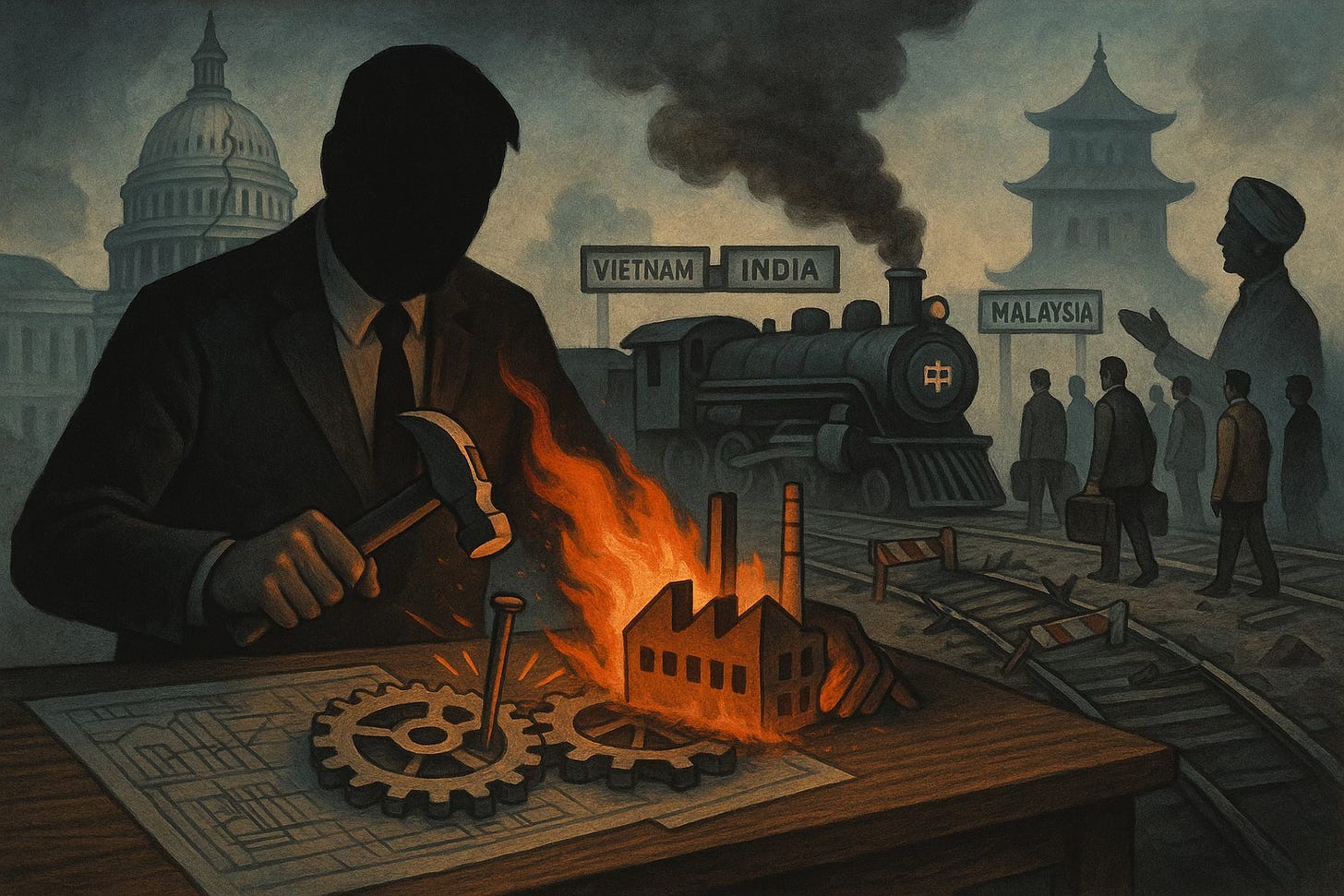China Plus Zero
The trade war that kept factories in China, raised U.S. costs, fractured its alliances.
The central promise of the 2025 trade policy was an exodus. A great reshoring of American manufacturing, compelled by aggressive tariffs designed to make China unworkable.
Reality? Paralysis.
The gambit began April 2, 2025, with a flat 10% ‘reciprocal’ tariff on nearly all imports, invoked under the legally dubious International Emergency Economic Powers Act.
By July 31, the flat rate morphed into chaos: 20% on Vietnam, 25% on India, 19% on Malaysia.
Logic was simple: make China expensive, firms flee. But they also made every viable alternative expensive. A company looking to shift production from China to Vietnam suddenly faced a 20% tariff there, neutralizing the incentive to move.
Relocating a supply chain is capital-intensive. Multi-year bet. Faced with new tariffs everywhere, the rational choice for many U.S. firms became staying put in China.
Devil you know.
The U.S.-China Business Council's latest survey confirms it: two-thirds of American companies plan to maintain their investments in China.
Then came the masterstroke of self-sabotage: a 40% penalty tariff on any goods deemed ‘transshipped’ through a third country to evade duties.
This provision nuked the China Plus One strategy—the only realistic path to diversification. Key hubs like Vietnam and Malaysia aren’t self-contained ecosystems. They assemble final goods with Chinese components. Now any shipment risks a 40% hit if a customs agent decides a microchip counts as Chinese enough. The policy punishes the very companies doing what policymakers claimed they wanted.
The tariffs amount to one of the largest tax hikes in a generation. The Tax Foundation projects a long-run loss of 831,000 jobs and a 0.9% hit to GDP. Yale’s Budget Lab puts the short-term cost at about $2,400 per household.
Geopolitically, the damage is worse. The unilateral tariffs have alienated strategic partners. India—the supposed democratic counterweight to China—was hit with a 50% tariff as punishment for buying Russian oil.
Result? New Delhi is now thawing relations with Beijing. A Modi-Xi summit is expected for the first time in seven years. Washington’s policy is actively pushing a key ally to hedge against America.
The primary decoupling effect of the 2025 trade war isn’t U.S. vs. China. It’s U.S. vs. its allies. While America picks fights with friends, Beijing positions itself as the stable, predictable actor.
Failed to onshore jobs. Failed to punish China.
Succeeded only in taxing American consumers while fracturing the alliances needed to contain the actual rival.


